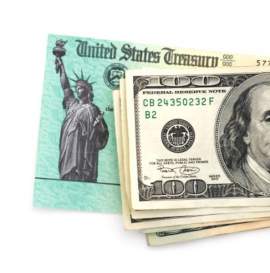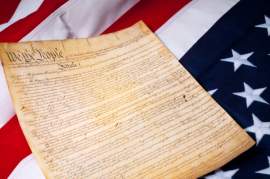
New York Tax

FULL List to New York Tax Forms
Individual Income Tax Forms
Form IT-201 Resident Income Tax Return
Form IT-203 Nonresident and Part-Year Resident Income Tax Return
Corporate Income Tax Forms
Form CT-3 General Business Corporation Franchise Tax Return
Form CT-3-S New York S Corporation Franchise Tax Return
Sales Tax Forms
Form St- 100 Quarterly Sales and Use Tax Return
Form ST-101 Local Annual Sales and Use Tax Return
Property Tax Forms
Form RP-485A Application for Real Property Tax Exemption ( Residential - Commercial )
Form RP-485B Application for Real Property Tax Exemption
Primary Concerns:
Most of the concerns over New York State’s economic condition can be summed up in one word: budget. At present in 2010, the budget deficit of New York State is projected to $9.2 billion dollars, with cash flow presently so poor that many payments to essentially state institutions needed to be deferred.
Most public of this was a cash deferment of $2 billion to New York public schools. The debate over how to solve this problem has been bitter and derisive, as all sides are unable to agree on a course of action.
Nearly everyone has come to the central conclusion that the state budget has escalated out of control, though few are sure of how to scale it back.
Many of the proposed cuts to state spending would inevitably come out of services the electorate feels are essential, such as schools, hospitals, transportation, and public safety, which inevitably leaves many taxpayers deeply embittered about the current state of the budget.
Combined in this bitterness is the fact that New York, statewide, has some of the highest taxes in the nation. Property taxes, especially, are amongst the highest in the nation, with some counties actually supporting the absolute highest taxes in the nation.
Sales taxes are also extremely high in most areas, as is gasoline tax. The cost of living, as a result, is extremely high in the state, with large portions of household going directly to taxes, especially property taxes.
The problem with this, of course, is that despite all of this taxation, the budget deficit still grew to tremendous proportions. Future regressive taxation is not really considered an option, as most New Yorkers state wide considered them already taxed to the breaking point.
This would leave the only option apparently being to slash the state budget, but that would involve giving up popular services that most everyone feels they are entitles to as part of the high taxes that they pay.
The solution to this problem because of this impasse, will not be easy, and may even get worse. New York State, as a result of its property taxes and high cost of living, is losing its population at a fastest rate of any state in the country.
Less residents mean less tax revenue for a state that is already facing a staggering shortfall, which means those who remain may have to suffer an additional burden. The ultimate decision of how to solve this problem still needs to be solved, though it is clear that far too many are "voting with their feet;" leaving New York State before the already dire tax situation gets much worse.
Income Taxes:
Income taxes in New York State are some of the most complicated in the nation, due to variations between the state and New York City, which while incorporated into the state, retains many broad powers of taxation. The City of Yonkers also implements a additional income tax surcharge of 5% in addition to state income taxes.
In New York State, all residents, part time residents, and individuals earning income from inside New York State must file an income tax return. Estates and trusts are also taxable.
Most individuals must fill out an IT-150 form, which for residents making less than $900,000 a year. New York State has very precise taxation tables but by the large they follow a set progressive pattern, with staggered rates, outlined below.
The first $16,000 has a rate of 4%, with the next $6000 being 4.5%. This means that if someone makes $20,000, then the first $16,000 is taxed at 4% while the next $4,000 is taxed at 4.5%.
The next $4,000 over $22,000 is taxed at 5.25%, with the next $14,000 at 5.9%. The next $110,000 is 6.85% and for the next $350,000 it is 7.375%.
After $500,000, which is what all of the previous increments add up to, the rate is 7.7%. The amounts are different for Married Filing Jointly or for Head of Household are slightly different, and require strict adherence to the state's income tax tables.
New York City has its own tax tables as well, which are added to state taxes. Single individuals, married partners filing jointly, resident estates and trusts are charges a rate of 2.907% for incomes that are $12,000 or less. Between $12,000 and $25,000 its $349 (which is 2.907% of $21,600) plus 3.534% of excess over the base of $12,000.
Between $25,000 and $50,000 the tax is $808 plus 3.591% of excess over the base. Over $50,000 the tax is $1,706 plus 3.648% off all excess over $50,000.
For married individuals filing joint returns or resident surviving spouses (widows or widowers), the rates remain the same but the bracketing is different. Income of $21,600 or less, the rate is 2.907%. Between $21,600 and $45,000 the tax is $628 plus 3.534% of excess over the base.
Between $45,000 and $90,000 it is $1,455 plus 3.591% of excess over the base. Over $90,000 the tax is $3,701 plus 3.648% of excess over $90,000.
Heads of household also retain the same rate. $14,400 or less the rate is 2.907%. Between $14,400 and $30,000 the tax is $419 plus 3.534% of excess over the base. Between $30,000 and $60,000 the rate is $970 plus 3.591% of excess over the base. Over $60,000 the tax is $2,047 plus 3.648% of all income over $60,000.
In Yonkers, the rate is ultimately determines based on deductions that are applicable, but as a rule, the implementation is an additional tax surcharge of about 5%.
Corporate Income Taxes:
Corporate tax rates in New York State are far more simplistic than their income tax counterparts, as the corporate income tax in New York State is a flat 7.1%. Corporations, in New York's definition, refers to virtually any company save for partnerships, which are exempt.
In New York City, however, corporations who have resides in the city, has an office of representation in the city, do business in the city, or are part of a partnership that conducts business in the city are subject to an additional General Corporation Tax (or in the case of financial institutions, a Banking Corporation Tax). These taxes change annually are extremely fluid, so a business not exempt from the tax is responsible for keeping track with the current rate.
The state also implements a number of taxes based on specific commercial services that may be applicable to many businesses, based on the forms of service the business provides.
Property Taxes:
New York State can lay the unfortunate claim to having some of the highest property taxes in the country, with Westchester County, to the north of New York City, having the highest in the nation. In many cases, as much as 8 percent of household incomes AFTER taxes go toward property taxes. It is a situation that has escalated dramatically since the mid-1990s, in some cases more than doubling, which is a rate far faster than that of inflation.
Property taxes in New York State are determined on a county to county basis through a assessment of real property, performed by the county assessor, by the tax rate or levy determined by the county. Rates throughout New York State vary, but as a rule have become extremely high as budget shortfalls have increased.
The assessment system has also drawn a great deal of controversy, as due to high property taxes, properties are selling far below their assessed worth, which means that many feel that property taxes in many areas are over-inflated as a result.
Personal property is exempt from sales tax in New York State and all counties.
Sales Taxes:
Sales tax in New York State is 4%, but every county and New York City add additional sales taxes to this base, usually making the actual taxes for consumers placed usually between 3 to 4.75% depending on locality. New York City presently has an 8.875% sales tax. New York City and many other districts implement as part of their sales tax a surtax that supports local transportation systems.
The state has eliminated a sales tax on all articles of clothing under $110, though most counties still charge a sales tax on all clothing (New York City, by distinction, honors the state's exemption).
New York State as also begun to aggressively pursue sales taxes in items purchases online or via mail order and shipped into the state (which would normally be classified under the auspices of a use tax). Therefore many online vendors have begun to directly implement these taxes when making shipments to New York, provided their sales receipts on shipments to New York total more than $10,000 annually.
New York state also charges a tax of $2.75 per pack of cigarettes, with New York City's tax of $4.25 (state tax plus city tax combined), being the highest in the country. Due to local county fuel taxes, New York also has some of the highest gas prices in the nation.
Tax Forms:
New York State employs multiple tax forms, but the core one applicable to most residents is the IT-150 and its variants. The IT-150 is for all individuals, couples, estates, and trusts who reside in the state full time who have less than $900,000 per year in earned income. The IT-201 and its variants and addendum are for residents who have a federally taxable income of more than $900,000 per year. The IT-203 is for part time residents or nonresidents who drew an income from within New York State during that tax year.
NEXT: North Carolina State Tax





















